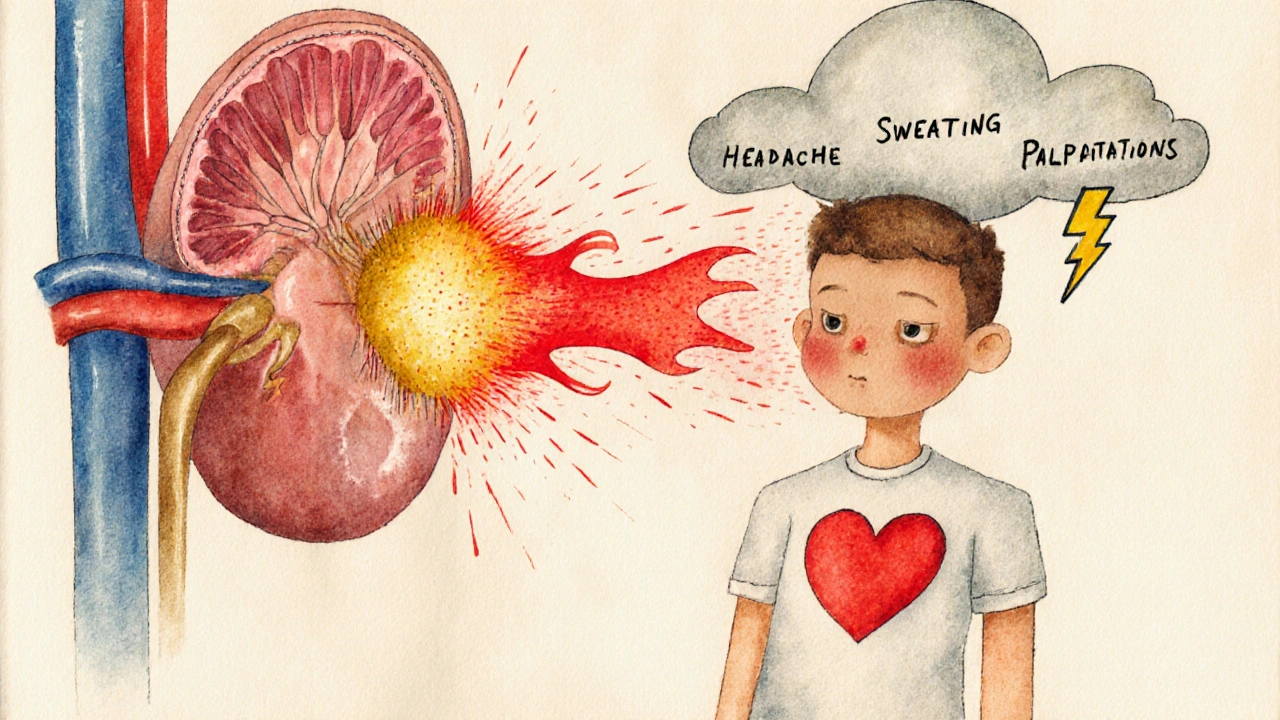Pheochromocytoma Surgery: What It Is, When It's Needed, and What to Expect
When your body makes too much adrenaline because of a rare tumor on the adrenal gland, you’re dealing with pheochromocytoma, a noncancerous tumor that triggers dangerous spikes in blood pressure and heart rate. Also known as adrenal paraganglioma, it’s not common—but when it happens, it can feel like a constant panic attack with no end in sight. Left untreated, this tumor can lead to stroke, heart attack, or sudden death. The only cure? pheochromocytoma surgery, the removal of the tumor through minimally invasive or open surgery. It’s not a routine procedure, but for those who need it, it’s life-saving.
This surgery doesn’t happen on a whim. Doctors first confirm the tumor with blood and urine tests that measure adrenaline-like chemicals. Imaging like CT or MRI scans shows exactly where it’s hiding—usually on one or both adrenal glands, sitting above the kidneys. Before surgery, patients take special medications like alpha-blockers for weeks to control blood pressure and stabilize the heart. Skipping this step is risky. The tumor can release a flood of adrenaline during surgery, causing a deadly surge. That’s why preparation matters as much as the cut itself.
Most pheochromocytoma surgeries today are done laparoscopically—small cuts, a camera, and tiny tools. Recovery is faster, pain is lower, and most people go home in 1–3 days. But if the tumor is large or stuck to nearby organs, open surgery might be needed. Either way, the goal is simple: remove the tumor, stop the adrenaline flood, and let your body reset. After surgery, many patients see their blood pressure return to normal without meds. Others still need treatment, but the wild swings are gone.
Not every adrenal tumor is a pheochromocytoma. That’s why accurate diagnosis is critical. Sometimes, what looks like high blood pressure from stress is actually this hidden tumor. If you’ve had unexplained sweating, headaches, or heart palpitations—especially in episodes—talk to your doctor. And if you’ve been told you need surgery, know this: it’s one of the most effective treatments in endocrine medicine. The success rate is high, and for most, life after surgery is calmer, steadier, and safer.
Below, you’ll find real patient stories, recovery tips, and insights on how this surgery fits into broader health management—from managing blood pressure meds to understanding genetic risks. Whether you’re preparing for surgery, recovering, or just trying to understand what’s happening, these posts give you the facts without the fluff.
Pheochromocytoma is a rare adrenal tumor that causes dangerous spikes in blood pressure through excess adrenaline. It’s often misdiagnosed as anxiety, but blood tests and surgery can cure it. Learn the symptoms, diagnosis, and why early detection saves lives.

